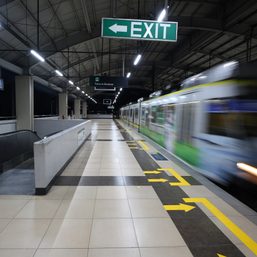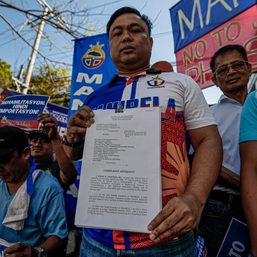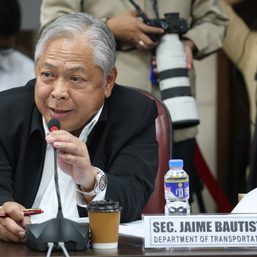SUMMARY
This is AI generated summarization, which may have errors. For context, always refer to the full article.
![[Vantage Point] Are airport glitches avoidable?](https://www.rappler.com/tachyon/2023/02/airport-glitches.jpg)
It’s been more than a month since that fateful New Year’s Day crisis which incapacitated the country’s air traffic. The initial violent reaction from affected publics has considerably cooled down, along with the noise that reverberated from the august chambers of Congress. Peering through their hindsight periscope, members of the upper and lower houses of the legislature were livid, clamoring for the chopping of heads.
As if on cue, many in the media echoed the calls of Congress for accountability, zooming in on Department of Transportation Secretary (DOTr) Jaime Bautista and Civil and Aviation Authority of the Philippines (CAAP) Director General Manuel Antonio “Skee” Tamayo whom they either wanted to voluntarily resign or get fired.
I believe that the incident, which lawmakers described then as an international embarrassment, merited condemnation. For one, it inconvenienced 65,000 travelers at a time when most of them began returning to the capital for work and school after the Christmas and New Year break. “Exhausting and frustrating” was how most of them described their ordeal of being stranded for hours at Philippine airports.
But does this episode justify the crucifixion of Bautista and Tamayo? Certainly not, if you ask me.
The two officials have barely warmed up their seats. Bautista was plucked out of retirement by President Ferdinand Marcos Jr. after a successful career in the private sector, having steered the financially wobbled Philippine Airlines into profitability. He took his oath of office on June 30, 2022, and got cleared by the Commission of Appointments on December 14. Convinced by Bautista to join him, Tamayo assumed the position as CAAP director general on the same day that Bautista breezed through the CA. A long-time PAL pilot, Tamayo was the DOTr Undersecretary for Aviation and Airports during the Duterte administration. He resigned after only a few months’ stint because of what he confessed to me was a “difficult working environment.”
The aftermath of the New Year aviation crisis was brutal for both officials. They were subjected to vitriol which came mostly from the previous DOTr and CAAP officials who appeared to be defensive on the issue. Trolls then began bombarding social media with calls for Bautista and Tamayo to resign, throwing everything at them, except for the kitchen sink.
Most vocal was Transportation Undersecretary for Administration Services Ochie Tuazon who said former transportation secretary Art Tugade tasked him to be his spokesperson. Tuazon pointed to negligence as the cause of the air traffic navigational system fiasco.
“To put it bluntly,” he said, “It is more of negligence on the part of the people who are supposed to be maintaining the [Uninterruptible Power Supply or] UPS. UPS is supposed to kick during power outages. Why did it fail? Because it’s not been properly maintained.”
Tugade and Tuazon apparently thought that the current airport officials were blaming them for the fiasco. Tamayo, on his part, denied blaming the Tugade administration for the mess: “We never blamed anyone. That is misinformation.”
What really went wrong?
What was initially thought as a malfunction in the UPS chain in the Communications, Navigation and Surveillance Systems for Air Traffic Management (CNS-ATM) turned up to be a failure of the system’s circuit breaker. In an interview with Rappler, Tamayo pinned the blame on a “fault” detected in the main circuit breaker which caused overvoltage, prompting the UPS to go into standby mode: “Our first assessment was a problem with the UPS since it was not providing power to the equipment despite being active and receiving power from the source. It was only after a series of remedial measures and thorough evaluation that our engineers were able to determine that the probable cause of the disruption was the circuit breaker.”
Tamayo said that, per CAAP’s final assessment, the airport crisis was triggered by the damage on two critical electrical components: the circuit breaker and the power transfer switch (PTS).
He explained that both items were turned over to the CICC (Cybercrime Investigation and Coordinating Center) on January 09, 2023, for forensic investigation to ensure impartiality: “The external investigation handled by other government agencies, like the Department of Information and Communications Technology (DICT), on the cyber-attack angle is still ongoing.”
He admitted that there were intervals in their official reports “as our controllers, engineers, and technical staff were all working together to ensure the safety of all aircraft queued for landing and to quickly restore power without further damaging our vital equipment. To put it plainly, we attended to the emergency in the most expeditious way we were trained to do, to ensure swift and safe resumption of operations. This is something we are very proud of, as the quick response of our personnel helped avoid having any unwanted accidents.”
Going forward, Tamayo revealed that CAAP will proceed with the full restoration and enhancement of the CNS-ATM; the procurement of the Ultimate Fallback System which is considered a system upgrade; the construction of an independent back-up for the current CNS-ATM, and the hiring of a third-party contractor to provide oversight.
Tamayo assured those who were affected that CAAP takes full responsibility and accountability for what happened. “We shall do the best we can in order to provide an efficient service to our country and the aviation sector. Definitely, we commit to see through this ordeal, remain transparent in all our dealings, and of service to the country, and the international community in ensuring that our skies are safe.”
To those who want him to quit his job, Tamayo said he knows that he’s not indispensable. “If I feel that I did not perform to the best of my abilities, I would gladly step down.”
Airport glitches
Days after the Manila Airport chaos, travelers in the United States had to suffer through a computer glitch that grounded thousands of flights across the country. On January 11 of this year, 1,840 international flight arrivals and 21,000 scheduled domestic departures were reported to have been affected. The Federal Aviation Administration (FAA) ordered all US flights to delay their departure, lifting the grounding order only after more than 3,700 flights got stuck on the tarmac. Some 550 flights were also canceled as a result of the malfunction that lasted more than 12 hours. Passengers were left stranded in airports across the globe. Others were stuck on the tarmac when planned departures were suddenly cancelled. Aside from the delay suffered by over 3,700 flights, more than 640 were canceled earlier in the day.
Interestingly enough, Senator Loren Legarda – for an unexplained reasons – forbade the CAAP from discussing the US situation during a Senate hearing on the Manila Airport fiasco. I find this weird because, in aid of legislation, they could have gotten a better understanding – from the experience of the US and other countries – on how glitches occur without warning in the most unexpected time.
In the same week, a series of similar airport breakdowns happened in the United Kingdom and Canada – countries which use a CNS-ATM similar to ours. If members of Congress were really serious in getting to the bottom of the problem, they could have learned a page or two from these countries’ crisis manuals to better cope with the after effects of airport electronics faults.
Through the years, these faults have led to travel chaos at airports around the world. These glitches range from airline employees accidentally deleting crucial Notice to Airmen (Notam) files to system errors caused by computer bugs.
In 2009, dozens of flights were canceled and hundreds more were delayed in airports across southeast England after a computer glitch at Britain’s main air traffic control center. More than 10,000 passengers were stranded after at least 88 flights were scrapped in London’s main airports, with services at Cardiff International and Manchester also affected. In August 2015, thousands of travelers in the US faced delays after a technical glitch grounded flights into and out of New York and Washington. The glitch, which occurred in an air traffic center in Leesburg, Virginia, caused delays of nearly three hours in some cases.
There are other incidents as far back as the 1980s where global air travels ground to a halt. In technical terms, a glitch refers to a small and fleeting error in a system that occurs due to unknown causes. Although the actual cause of a glitch may be unknown, it may cause serious harm to the system, including power failure, temporary loss of service, or data loss.
When I asked Tamayo for a definite assurance that the New Year airport mess will not happen again, he was non-committal. “We can only exert our best effort,” confirming the difficulties of avoiding glitches that global airport specialists have been trying to find a solution to through the years. – Rappler.com
Val A. Villanueva is a veteran business journalist. He was a former business editor of the Philippine Star and the Gokongwei-owned Manila Times. For comments, suggestions email him at mvala.v@gmail.com.
Add a comment
How does this make you feel?


![[Under 3 Minutes] When will we see modern jeepneys on the road?](https://www.rappler.com/tachyon/2024/04/francisco-motors-modern-jeepney-prototype-1.jpg?resize=257%2C257&crop=590px%2C0px%2C1012px%2C1012px)









![[Vantage Point] BDO lifts NAIA rehab](https://www.rappler.com/tachyon/2024/02/tl-naia-bdo-smc.jpg?resize=257%2C257&crop=370px%2C0px%2C1080px%2C1080px)

![[VANTAGE POINT] MIAA on the spotlight: Follies of the law](https://www.rappler.com/tachyon/2023/09/martires-miaa-september-5-2023.jpg?resize=257%2C257&crop=328px%2C0px%2C1080px%2C1080px)
![[Uncle Bob] No whores at the Oarhouse](https://www.rappler.com/tachyon/2024/06/oarhouse-june-28-2024-2.jpg?resize=257%2C257&crop=414px%2C0px%2C1080px%2C1080px)



There are no comments yet. Add your comment to start the conversation.